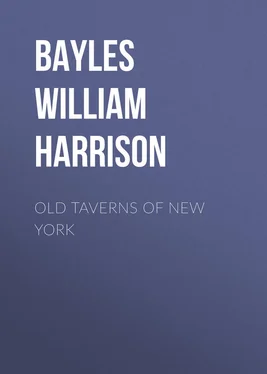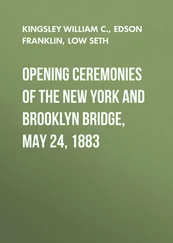William Bayles - Old Taverns of New York
Здесь есть возможность читать онлайн «William Bayles - Old Taverns of New York» — ознакомительный отрывок электронной книги совершенно бесплатно, а после прочтения отрывка купить полную версию. В некоторых случаях можно слушать аудио, скачать через торрент в формате fb2 и присутствует краткое содержание. Жанр: foreign_antique, foreign_prose, на английском языке. Описание произведения, (предисловие) а так же отзывы посетителей доступны на портале библиотеки ЛибКат.
- Название:Old Taverns of New York
- Автор:
- Жанр:
- Год:неизвестен
- ISBN:нет данных
- Рейтинг книги:3 / 5. Голосов: 1
-
Избранное:Добавить в избранное
- Отзывы:
-
Ваша оценка:
- 60
- 1
- 2
- 3
- 4
- 5
Old Taverns of New York: краткое содержание, описание и аннотация
Предлагаем к чтению аннотацию, описание, краткое содержание или предисловие (зависит от того, что написал сам автор книги «Old Taverns of New York»). Если вы не нашли необходимую информацию о книге — напишите в комментариях, мы постараемся отыскать её.
Old Taverns of New York — читать онлайн ознакомительный отрывок
Ниже представлен текст книги, разбитый по страницам. Система сохранения места последней прочитанной страницы, позволяет с удобством читать онлайн бесплатно книгу «Old Taverns of New York», без необходимости каждый раз заново искать на чём Вы остановились. Поставьте закладку, и сможете в любой момент перейти на страницу, на которой закончили чтение.
Интервал:
Закладка:
In 1661 Annetje Cock was a widow and in control of the tavern which Peter Cock had left. She asked permission to build a new house on the southeast corner of the lot, which request was refused, as it would be too near the fort. Her husband had contracted for the building of a house on the lot, which she claimed was voided by his death, and wished to make a new contract with others, but the court decided that the old contract was binding. A new house was built which was kept by her as a tavern for many years.
The taverns of New Amsterdam were probably modeled somewhat after those of Holland, for the Dutch were a people who stuck to the customs of the fatherland. The description of a Dutch tavern, from the journal of one of our citizens who visited a part of the Netherlands where customs have not changed for centuries is here given.
“It was the business of the good vrow or her maid to show up the traveller, and open the doors in the smooth partition of the box which was to receive his weary limbs for the night, and which otherwise he might not be able to discover, and after he crept into it, to come back again and blow out the candle, and in the morning to draw the curtains of the windows at the hour he fixed to rise. There was generally one room in which all the guests were received, and where there was a pleasant reunion in the evening, and all the visitors ate, drank and smoked. It had, in one corner, a closet, which, when opened (and, honestly, it was not unfrequently opened), disclosed sundry decanters, glasses and black bottles; and, on one side of the room, a rack in which were suspended by their bowls a score or two of very long pipes, each one inscribed with the name of a neighbor or owner. This was the room of Mynheer the landlord. He had no care beyond this; mevrow was the head of the house; she attended to all the wants of the guests, and gave them the information which they might desire. She was always on the spot as when, with a ‘wet te rusten,’ like a good mother, she bade you good night, and when, with a ‘hoo-y-reis,’ like an old friend, she bade you good-by.”
In the contract for building the ferry house on the Long Island side of the East River for Egbert Van Borsum in 1655, provision was made for bedsteads to be built in the walls as described above. Thus an apartment could be made to accommodate several travellers at night and yet, in day time, present a neat appearance and be used as a public room. Provision was also made for the closet or pantry, for it was a source of profit.
A few years later the Ferry Tavern of Van Borsum had acquired such a reputation, to which the culinary art of Annetje, his wife, greatly contributed, that it became the resort of the best citizens when they wished for something extra good, and of the officials of government, as we find that a bill rendered by Van Borsum in February, 1658, for wine and liquor furnished the Director and other officers was ordered to be paid.
When, in 1658, Captain Beaulieu wished to give a fine dinner to his friends, he did not go to the tavern of the Worshipful Burgomaster Martin Crigier nor to that of Lieutenant Litschoe, who entertained the English Ambassador a few years later, nor yet to the popular tavern of Metje Wessels; but was influenced, for some good reason, to go to the house of Egbert Van Borsum, the Ferry Tavern on the Long Island side of the river. Here the Captain and his thirteen friends sat down to a dinner for which Van Borsum, if the record is correct, charged him three hundred and ten florins, or at the rate of nine dollars per plate; and it appears that it was worth the price, for although Beaulieu was sued by Van Borsum for the bill, his defence was that he was to pay only one-half of the expense, the other half to be paid by a few of the other guests. No complaint was made that the amount charged was excessive. Annetje Van Borsum testified before the Court that she made the arrangement and bargain with Beaulieu alone and looked to him for payment. The Court took this view and gave a verdict against Beaulieu for the full amount. Annetje Van Borsum must certainly have been a fine cook, and the dinner must have been served with some expensive accessories, of the nature of which we can hardly surmise. It serves to show that New Amsterdam, even at this early period, was not entirely devoid of expensive luxuries (for such must have been the case). After the death of Egbert Van Borsum, his widow, Annetje, continued the business for several years, she herself managing the tavern, and her son, Hermanus, attending to the ferry. In her declining years she retired to the city of New Amsterdam where she died at a green old age.
In 1655 Solomon Peterson La Chair, a gentleman of the legal profession, made his appearance in New Amsterdam, and, as there was not a promising prospect in that line of business, he rented the house of Teunis Kray, on the Graft, and petitioned the Burgomasters and Schepens for permission to keep it as a tavern, which could be managed by his wife in his absence on legal business, and would be of great assistance to him in gaining a livelihood. Permission was granted. He afterwards bought the house of Kray, agreeing to pay for it in instalments; but as Kray had formerly sued him for the rent he had now to sue him for the very first instalment; and he never succeeded in paying for it, the money, even when he had it ready, as he says, slipping through his fingers. He did not pay anyone he owed until forced to. He used every means which his learning in the law and his own ingenuity could devise to avoid paying his just debts. He was impecunious and improvident and constantly in trouble; yet he was a man of considerable learning and ability, as evinced by his register of business as a notary, a volume of some three hundred pages, which was discovered in the county clerk’s office some years ago. He obtained a license to practice as a notary in 1661. La Chair, defaulting in payment, Kray came again in possession of the house he had sold, and La Chair moved to a house in Hough Street, where he continued to keep a tavern until his death, a few years later. There was much discussion in the little town on political matters, and La Chair, as a man versed in the law, could probably attract many to his house, where, no doubt, such subjects were thoroughly discussed.
November 26, 1656, a petition was presented to the Burgomasters and Schepens from Metje Wessels, requesting permission “to follow the trade of an eating house and to bring in and tap out wine and beer,” which was granted.
Metje Wessels’ house was situated on The Water, which was what is now the north side of Pearl Street, between Whitehall and Broad Streets, in the busiest part of the little city, and not far from the City Hall. It became a noted place for Burgomasters’ dinners, and was a popular place for festivities of all kinds, characteristic of the taverns of this period. The Burgomasters and Schepens of New Amsterdam had discovered the toothsome terrapin, for which their successors, the aldermen of New York City, were, years ago, known to be particularly partial, and their dinners at the widow’s tavern were no doubt supplied with this delicious viand. Van der Donck, writing in 1656, says: “Some persons prepare delicious dishes from the water terrapin which is luscious food.” Here men went on the arrival of a ship, to meet the skipper and hear the news from the fatherland or from other foreign ports. Here were discussed the tidings from up the river, where many young men were making adventurous excursions among the Indians, in the far-off northern wilderness, in the profitable business of gathering furs. The trade in furs, the Indian troubles, the military expeditions, the Dominie’s sermons and the Director-General’s proclamations, – these, and a great many more, both public and personal matters – were talked over. It was a sort of business and social exchange where were gathered and distributed news and gossip of all kinds.
Читать дальшеИнтервал:
Закладка:
Похожие книги на «Old Taverns of New York»
Представляем Вашему вниманию похожие книги на «Old Taverns of New York» списком для выбора. Мы отобрали схожую по названию и смыслу литературу в надежде предоставить читателям больше вариантов отыскать новые, интересные, ещё непрочитанные произведения.
Обсуждение, отзывы о книге «Old Taverns of New York» и просто собственные мнения читателей. Оставьте ваши комментарии, напишите, что Вы думаете о произведении, его смысле или главных героях. Укажите что конкретно понравилось, а что нет, и почему Вы так считаете.












